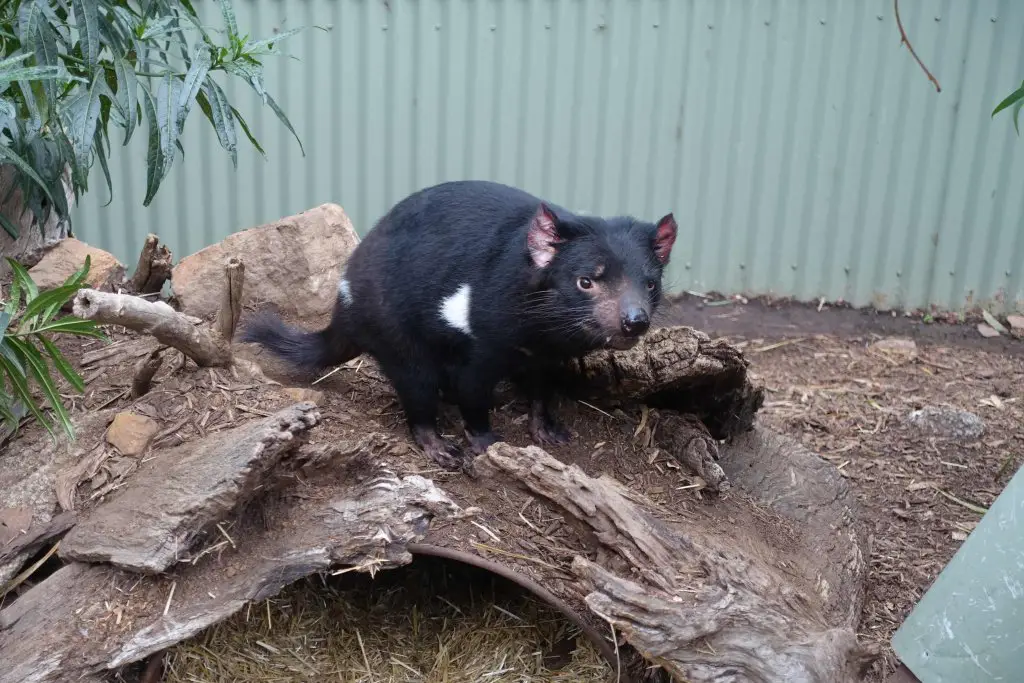Came to see Tasmanian Devils, but ended learning so much more. Part conservation, part education social enterprise.
Why Bonorong Wildlife Sanctuary
One of the things I was hoping to see in Tasmania was the Tasmanian Devil. Saw wombats, pademelons and possums on the Overland Track, but not echidnas, platypuses or Tasmanian Devils, the rarer of mammals spotted along the trail. From Hobart there were 2 places to see these amazing Tasmanian animals – the Tasmanian Devil Unzoo and Bonorong Wildlife Sanctuary. Tasmanian Devil Unzoo turned out to be further and significantly more expensive that Bonorong Wildlife Sanctuary to visit, so we opted for the latter. Still costed a bit though, but being able to see native Tasmanian wildlife, and knowing that entrance fees go towards Tasmanian wildlife conservation made it a small price to pay.
About Bonorong Wildlife Sanctuary
Bonorong isn’t a zoo but rather a place for rescued Tasmanian wildlife. Some of them will eventually recover and return to the wild, but some of them are not deemed to be suitable for release and will stay for a longer time. In a way each animal you see here has a sad backstory, but Bonorong Wildlife Sanctuary’s role is to try to turn them into happy endings.
There are also animals from mainland Australia that were from a time before Bonorong became a wildlife sanctuary, who are probably going to live out the rest of their days here.
Expect to see Tasmanian Devils, echidnas, koalas, Australian birds, lots of kangaroos and many other smaller critters that may be hard to spot (and I don’t have pictures of). One of the biggest stars was a wombat, but not sure how long she’ll be there.
Getting to Bonorong Wildlife Sanctuary from Hobart and entrance fees
Bonorong is about a 30 min drive from Hobart. There is no direct public transport between Hobart and Bonorong, and we were advised that public transport would involve multiple transfers and a long commute. Another option we deliberated upon was renting a car. Then there was the option of tours, which we had first considered, but couldn’t find any that ran that day. Eventually found a company that provided transport between Bonorong and Hobart for AUD 35, which worked out to a similar amount for renting a car split between 2. Being on the safe side we opted for the transport service. That excludes entrance fees of AUD 31. More on entrance fees to Bonorong Wildlife Sanctuary here. Entrance tickets come with one small bag of kangaroo feed and includes the guided tour.
Heart of Tasmania Tours depart a few times a day, in line with the scheduled guided tours provided by Bonorong Wildlife Sanctuary. Departure and return in Hobart is at the Tasmanian Travel and Information Centre, where you can book your shuttle and Bonorong ticket (sold separately). For more information on the shuttle (if like us you can’t find a more viable alternative), you can check out Heart of Tasmania Tours’ website.
The entire trip from Hobart was 2.5 hours, half hour traveling each way and 1.5 hours in Bonorong itself.
The Stars of Bonorong Wildlife Sanctuary
I’d definitely recommend joining one of the scheduled guided tours as the whole story will make much more sense then. It covers just a few of the animals but good enough to get started. Here’s a short gallery of animals at Bonorong, and you can find out more when you visit.
Feeding/ guided tour
First up, Millie the wombat, orphaned by a road accident. Cute but soon to be violent.

And of course, Tasmanian Devils. There were quite a few of them in a few different enclosures. This was not the one that was fed during the tour. The ones that were fed during the tour were apparently brought up by well meaning but ill informed Tasmanian residents, who fed it a diet that made them almost blind.

Koalas are not native but were brought in when Bonrong was still not focused on wildlife rescue. Guests were allowed to take pictures next to them with guides’ supervision. The koalas didn’t seem to care and looked like they were sleeping most of the time.

Beyond the tour
And those were the main stops of the guided tour/ feeding time. Just next to the koalas was a Randall the three-legged echidna, courtesy of a dog attack.


There was also a variety of Australian birds at Bonorong, here’s some of them. Bad with recognizing/ remembering bird details though, here are my photos alongside googled names.




Crazy kangaroos
And sooo many kangaroos. You won’t believe it until you’re in Bonorong. They’re all over the place, just waiting for kangaroo feed. Reach a handful out to one, and soon they’re all over you. Not exaggerating. Here are some of them. All calm before I took out some kangaroo feed.



This was before I reached a handful out to one. After I did that all hell broke loose. It was a zombie attack.



Final thoughts on Bonorong Wildlife Sanctuary
It was a great experience coming up close to all these amazing animals, and an eye opening seeing how a private enterprise can run a sustainable rescue and conservation effort without government funding. Maybe such ideas are the way forward!

![[Australia] Tasmania Road Trip Part 4 - West to South Horseshoe Falls, Tasmania.](https://aaronteoh.com/wp-content/uploads/2023/12/DSC03977-1200x800-1-150x150.webp)
![[Australia] Tasmania Road Trip Part 3 - Cradle Mountain Cradle Mountain.](https://aaronteoh.com/wp-content/uploads/2023/09/DSC03205-1200x800-1-150x150.webp)
![[Australia] Tasmania Road Trip Part 2 – North East/ North DSC01943-1200×800](https://aaronteoh.com/wp-content/uploads/2023/09/DSC01943-1200x800-1-150x150.webp)